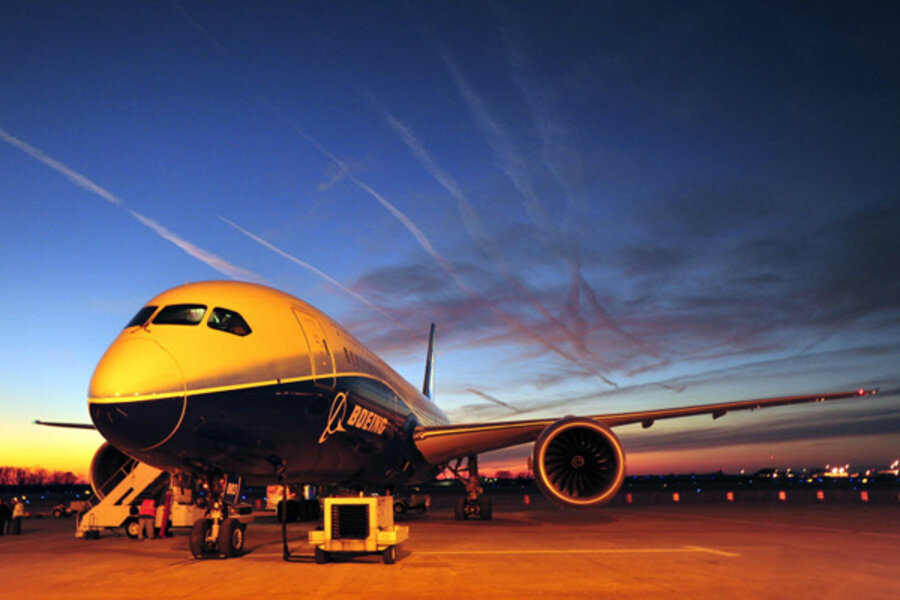FAA calls Boeing 787 Dreamliner safe, begins comprehensive review
Loading...
| WASHINGTON
The Federal Aviation Administration is conducting a comprehensive review of the design, manufacture and assembly of the Boeing 787, even while government officials declared the plane safe despite recent incidents including a fire and a fuel leak earlier this week.
Michael Huerta, the FAA administrator, said at a news conference Friday there is nothing in the data the agency has seen to suggest the plane isn't safe, but the agency wants to figure out why the safety-related incidents are occurring.
Transportation Secretary Ray LaHood went a step further: "I believe this plane is safe and I would have absolutely no reservations about boarding one of these planes and taking a flight," he said.
The 787, which Boeing calls the "Dreamliner," is the aircraft maker's newest and most technologically advanced airliner. It relies more than any other modern airliner on electrical signals to help power nearly everything the plane does. It's also the first Boeing plane to use rechargeable lithium ion batteries, which charge faster and can be molded to space-saving shapes compared to other airplane batteries. The plane is made with lightweight composite materials instead of aluminum.
A fire ignited Monday in the battery pack of an auxiliary power unit of a Japan Airlines 787 empty of passengers as the plane sat on the tarmac at Boston's Logan International Airport. It took firefighters 40 minutes to put out the blaze. Also this week, a fuel leak delayed a flight from Boston to Tokyo of another Japan Airlines 787.
On Friday, Japan's All Nippon Airways reported two new cases of problems with the aircraft. ANA spokeswoman Ayumi Kunimatsu said a very small amount of oil was discovered leaking from the left engine of a 787 flight from southern Japan's Miyazaki airport to Tokyo.
The jet returned to Miyazaki, but after checks found no safety risk it flew to Tokyo. ANA said on another flight, to Matsuyama on the island of Shikoku, glass in a cockpit window cracked and the aircraft was grounded for repairs. ANA said it has no specific plan for inspections and will continue regular operations, though it said it would comply with instructions from the FAA and other authorities.
Boeing has insisted that the 787's problems are no worse than what it experienced when its 777 was new in the mid-1990s. That plane is now one of its top-sellers and is well-liked by airlines.
"Every new commercial aircraft has issues as it enters service," Ray Conner, the president and CEO ofBoeing's commercial aircraft division, joined Huerta and LaHood at the news conference
Boeing has delivered 50 of the 787s, starting in late 2011, and has orders for nearly 800 more. To get through the backlog, Boeing is ramping up production to build 10 787s per month in Washington state and South Carolina by the end of the year.
By comparison, it builds more than one 737, Boeing's best-seller, every day.
The company said in November that it had begun making five 787s per month. But if any major manufacturing changes are needed to fix the problems, it could fall further behind in deliveries.
Huerta and LaHood rejected the notion that FAA may have not have vigilant enough when it certified the 787 for commercial operations. LaHood noted FAA technical experts logged some 200,000 hours on testing and reviewing the plane's design before it was certified in August 2011.
Boeing first applied to make the 787 to the FAA in 2003. The first 787 flew in December 2009, and six test planes ran up some 4,645 flight hours. About a quarter of those hours were flown by FAA flight test crews, the agency said in 2011.
The battery that burned on Monday is used to start the plane's auxiliary power unit, a small engine in the back of the plane that that acts as a generator to provides power on the ground, or if the jet engines quit. Other planes use hot air from the outside to start the APU. But one of the fuel-saving designs in the 787 was to get rid of the hot air system used by other planes, so its APU is started with electricity.
Lithium-ion batteries are potentially more susceptible to fire because, unlike other aircraft batteries, the liquid inside of them is flammable. The potential for fire increases if the battery is depleted too much or overcharged. Boeing has built in special circuitry and other safeguards designed to prevent that situation.
The review also raises questions about the 787's ability to win approval to fly extremely long distances away from airports. That's a huge issue, since the 787's long range is one of its main selling points. Regulators want to know that long-range planes are safe to fly even if the nearest airport is more than an hour way. Such certification is important for flights across the Pacific, or over the North Pole, the route used for many flights between North America and Asia.
The 787 already has approval for flights up to three hours away from the nearest airport. It has met the flight test requirements to go up to 5.5 hours away but doesn't have permission yet because of a rule change by the FAA, said 787 chief engineer Mike Sinnett on Wednesday.
Boeing's 777 won such approval in December 2011.





